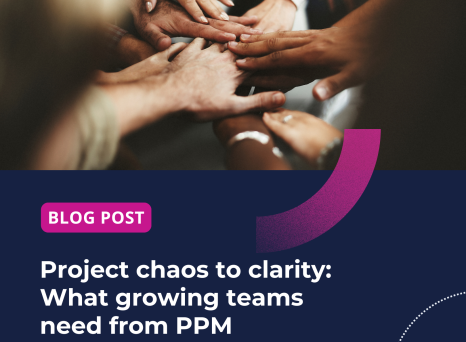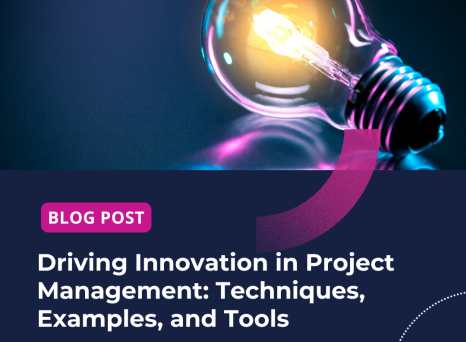Communication is one of humans' most important skills, and one that has been instrumental in making us such a successful species. "[Communication] enables us to share, accumulate, and store vast quantities of information, that allows us to coordinate our activities in ways that no other creatures can, and that underwrites the bewildering variety of social relations and institutions that structure our lives." Maybe a bit too much... With the digital age and its explosion in data also came digital information overload. Yet, the need for effective communication has never been more important as leaders manage teams at a distance with video calls and teleworking becoming the new norm.
There is no one-stop-shop rule for communicating, as every situation differs but as a project manager, you can expand your skills and devise a process to ensure that the next time your asked for an impromptu progress update, you can deliver an efficient overview of the situation without fumbling over the details.
The Basics
- Jason R. Waller explains how a top-down approach to building your message can help you be heard: start with one governing thought and 3 supporting thoughts, and leave the minor details until the very end read time 5 mins.Top level management are often time-poor and form an opinion quite quickly if they cannot understand the main progress within the first two sentences.
- How you deliver your message is key, but so is the ability to read the room and choose the right moment to propose your idea, as explains former white house advisor Grant Harris in his breakdown of how to brief a senior executive read time 4 mins.
- However, this idea will only reach what Manos Kyriakakis calls “kind rejection” if there is not clear numbers and facts to back up the proposal read time 4 mins. Project managers must execute before they pitch. No matter how good the presentation is, any idea can be counter argued if there are no initial results revealing the potential of the project.
- Once you have the data to back up your claim, how you look and sound during your presentation of the argument will make a big impression on your manager read time 5 mins. Carmine Gallo reveals how people form impressions about a leader's confidence in as little as half a minute and gives us examples of how some of the best TED Speakers use gestures, vary their pace, and take time to pause. And best practices are not limited to in-person communication: on video calls too, small changes can have a big impact as Anne Quinto explains read time 2 mins.
This all sounds great on paper but with a Harvard Business Review survey revealing that senior managers find 71% of meetings unproductive and inefficient. Having great communication skills is a wasted resource if the meetings was already set up for failure from the outset.
The Effective Meeting
- Steven Rogelberg explains how agendas are an important first step to successful meetings read time 4 mins. By listing the agenda items as questions rather than vague bullet points, the people essential to answering these questions can be identified. And if you cannot think of any questions to ask, maybe the meeting was never needed in the first place...
- Once in the meeting, that's where all the talking happens right? Not exactly. David Gasca gives us the breakdown of how to make meetings suck a little less by making it a silent meeting read time 26 mins. Piloted by Jeff Bezos at Amazon, the purpose of the silent meeting is to spend most of the time thinking and discussing the topics at hand. This format addresses issues such as vague agendas, bad presentations, and rambling questions by spending up to 50% of the meeting silently reading the memo.
These meetings will end with a brief discussion which is one of the less controllable aspects of the process as tempers can flare, characters can clash and finding a way to effectively communicate can be difficult. However, if employees are trained to debate ideas in a healthy way, a little conflict at the end of a meeting might the key to opening up more constructive conversations.
The Constructive Conversation
- Shane Snow gives us the ultimate guide to debating ideas productively in which he urges us to move away from “nice” conversations where people hold back what they really think read time 4 mins... But making sure you follow four ground rules for keeping things friendly.
- World debate champion Julia Dhar goes a step further by illustrating real life scenarios in this TED Talk on how to have a constructive conversation watch time 10mins.
We need to figure out how we go into conversations not looking for the victory, but the progress,
- Curiosity is a central theme in all constructive conversations and author Louise Evans highlights the importance of curiosity in her 5 choices to mastering communication watch time 18 mins. From attacking to connecting, we all have a choice when reacting to the behavior of others. Evans urges us to take a step back and think about which chair is best for your response rather than making rash decisions.
Communication is a multifaceted, subtle skill. But if you dig a little, all these best practices are built on structures of confidence, curiosity, and preparation. Communication breaks down boundaries and opens new horizons best illustrated by this quote from Abraham Lincoln,
I don't like that man. I must get to know him better.

